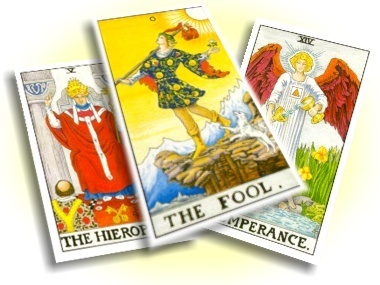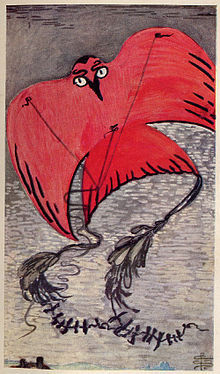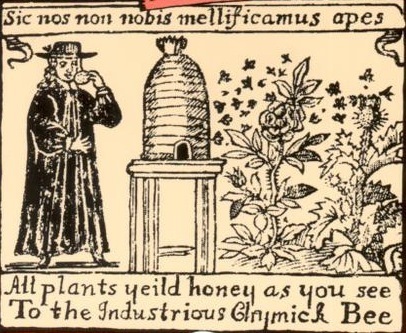Stephen Morris's Blog, page 58
February 19, 2013
The Golem and the Jinni

The Golem and the Jinni, by Helene Wecker
I was recently at the Midwinter meeting of the ALA and picked upr The Golem and the Jinni by Helene Wecker and was very impressed. She first introduces us to the Golem, a woman made of clay and brought to life by Kabbalistic magic, who arrives alone in turn-of-the-century New York City. Then we meet the Jinni, who also arrives alone in Manhattan. We follow parallel storylines that are both complicated yet easy to follow as we discover the “back story” of these two characters even as we follow their adventures in New York. In an amazing series of twists and turns, all the storylines are brought together in the final confrontation of the book.
Ms. Wecker describes the magic in wonderfully understated terms. She also is very creative in filling in the gaps or “unpacking” the legendary origins of golems and jinn, unting her own imagination to traditional lore. The portrait of immigrant New York is also exquisite.
My only difficulty with The Golem and the Jinni was making myself read it slowly enough to appreciate the language and the story when I wanted to rush ahead to see what happens next!
February 16, 2013
Happy birthday, Pamela Colman Smith!

Tarot cards with the famous images designed by Pamela Colman Smith.

Pamela Colman Smith, c. 1912
Pamela Colman Smith, best known for her illustration of the tarot deck that now bears her name [Rider-Waite-Smith] and has become the standard deck nearly all readers begin and learn with and continue to use throughout their reading careers, was born on February 16, 1878. Born in England and raised in New York, she studied art at the Pratt Institute in Brooklyn. She returned to England when her father died in 1899 and continued her work as an illustrator which she had begun in the US. Her work included illustrating works by Bram Stoker and she began designing costumes and stage sets for the theatre company Stoker was affiliated with.
Her friend Yeats introduced her to the Heremetic Order of the Golden Dawn and she joined in 1901. Having met Waite, he commissioned her to produce a tarot deck in 1909. Published by William Rider & Son of London, the deck was the first to depict illustrations for all the cards, Minor Arcana as wellas Major, and has remained the most popular and easily available deck.
The images she designed for the Major Arcana were evidently based on Waite’s detailed instructions but he simply gave her a list of the meanings associated with the Minor Arcana cards and left her to design the images for those herself. Most likely, she drew all the images in pen-and-ink and then used watercolor to complete the work.
Shortly after the publication of the tarot deck, Pamela converted to Roman Catholicism. She died in Cornwall, 18 September 1951 penniless and in debt, evidently having received no royalties from the card images she had produced and for which she had been paid a flat fee.

Illustration for the first edition of Bram Stoker’s Lair of the White Worm in 1911
February 13, 2013
Love is in the air!
It was a Norse custom to give a newlywed couple enough mead (i.e. honey wine) to last for a month. Hence, our term “honeymoon” ti describe the first weeks of marriage.
 Collecting the honey to make mead or use to preserve/sweeten food.[/caption
Collecting the honey to make mead or use to preserve/sweeten food.[/captionWith the modern celebration of Valentine’s Day nearly upon us, can thoughts of love magic be far behind? A number of traditional ways to win another’s heart have been used over the years. One way a woman could win a man’s heart was by feeding him food into which she had mixed some of her own blood (menstrual blood was especially effective). Catching the reflection of mating birds in a mirror on Thursday was the first step in a more complicated love spell. After catching the reflection, a person would give the mirror to his or her chosen and once the receiver looked into the mirror, they would be irresistibly infatuated with the mirror-giver. Or a woman might resort to the much more simple use of caraway seeds, cloves, or coriander to win the affection of the man she had chosen. One English love potion included the kidney of a rabbit, the womb of a swallow, and the heart of a dove while an ancient Greek love potion used a stallion’s semen or a mare’s vaginal discharge.
Garlic, saffron, ginger, or even vanilla(!) were more likely to be used in erotic magic, which was less concerned with affection, and more likely to be aimed by men at women. Wax images could be pierced by pins to incite lust. Striking the intended with hazel or willow branches was also thought to inspire lust. Or you could obtain a few hairs from your intended’s head, tie them in a knot with twine, and then keep the amulet on your thigh or around your genitals to draw your intended’s attentions.
Of course, there were ways to deflect this sort of magic as well. Lily or lettuce could break love spells or decrease lust and thwart unwanted attentions. Just be sure not to confuse which herbs you feed to which guest at your table!
February 11, 2013
Kindle Fire eBook of the Day!
Come Hell or High Water, Part 2: Rising is the Kindle Fire eBook of the day! Go see the feature here!
Exciting! Let’s raise the sales ranking of the book like we did for Part 1 when Kindle Nation Daily featured it in January!
February 8, 2013
“Let it snow! Let it snow! Let it snow!”

This woodcut depicts a storm being conjured. The figure with the sword or athame is perhaps trying to prevent the storm’s arrival on land, even as he is pouring water through the sieve in his other hand to raise the storm at sea.
The blizzard has begun here in NYC and the snow is blowing sideways! The ice and snow stung my face like sharp glass when I was out earlier this afternoon and it is only supposed to become more and more a Nor’easter-style blizzard as the night goes on. (But when did blizzards and storms start to be named? This is “Nemo,” I gather; aren’t hurricane names enough to keep track of?)
Weather has always been one of the most important contributors to human experience, especially in agricultural societies. Nowadays, we think nothing of checking what the weather will be like tomorrow or next week; not so long ago, we would not have known there was snow comiong until it started to fall. We would not know that it was a blizzard until it had — in fact — BECOME a blizzard or was nearly over. So knowing what the weather was going to be and having some small control over it was a major preoccupation in times past.
One of the most common ways to bring a rainstorm was to pour water through a sieve. Or sprinkling water with a handful of herbs could summon a downpour as well, as could burning heather and fern. A wind could be conjured by whistling, or playing a tune on a whistle (a whistle of rowan wood was especially effective). Swinging kelp in a clockwise direction and whistling woukd also attract the wind.
But whistling on a ship could bring on a dangerous storm. It was safer to buy a cord with the breezes and winds knotted into it. Such cords would typically have three (3) knots, each containing a breeze or stronger wind that could be released as needed. The sailor would release the most gentle breeze first and then release the others only if needed.
According to the book, Women Pirates and the Politics of the Jolly Roger by Ulrike Klausmann, Marion Meinzerin and Gabriel Kuhn [Black Rose Books, Montreal, 1997], the last European wind-seller was Bessy Miller, a resident of the Orkney Islands. Sea travelers were still paying her tribute in the nineteenth century.
To stop a storm, or at least prevent its damaging your house or fields, you can take your ritual dagger (athame) and swing it over your head, run toward the oncoming storm, and slice the air at the edge of your field with the athame, plunging the blade into the earth. This will slice the storm into pieces and divert it from your land.
February 6, 2013
“Parsley, sage, rosemary, and ….”

Thyme in bloom
A “feminine” herb, ruled by Venus and associated with the element Water, thyme (named by the Greeks from the word “fumigate” or “smoke”) is burned to attract health and promote psychic powers. It is also burned to purify an area prior to performing a magical ritual. A bath of thyme (combined with marjoram) cleanses a person of sorrows and ills, even those of long-standing. Roman soldiers would sometimes wash in thyme before a battle to increase their courage and strength. (It was probably the loss of the soldiers’ sorrows and ills which allowed their courage and strength to come to the fore.)
Thyme can also be used to bring a restful, undisturbed sleep and keeps nightmares at bay. To do this, it should be placed beneath your pillow. (I should have used this the other night when I was awakened at 3 a.m. by a nightmare in which I was buried alive by the 30 Rock character Tracy Jordan. Seriously — Tracy Jordan?!?!)
Thyme was also reportedly used in Egypt during the mummification process. “To sleep, perchance to dream….” A well-rested sleep, with good dreams that are pure and undefiled. These are the gifts of thyme, to both the living and the dead.
New Review!
A great new review was just posted by Bonnie at The World of Tarot. She says, in part, that
“Amazing things happen in this book! …Morris does an excellent job of presenting Prague, its people and its mythology. He also does a nice job with presenting actual ritual, and with using the energy of the Tarot….”
You can read the whole review here. And then check out the rest of the site as well. She does a great job!
February 5, 2013
Sage

Sage in bloom
Everyone knows the folksong refrain, “Parsley, sage, rosemary, and thyme.” Well, we’ve covered parsley and rosemary. Now we turn to sage!
Nearly everyone has sage in the kitchen cupboard. Sage tastes great with fatty food dishes like duck and pork. It is also great with red meats. Sage is often used in tomato sauces. Sage is a common ingredient in turkey stuffing in the United States. But the importance of sage in occult practice long predates its use in cooking.
Designated a “masculine” herb, ruled by Jupiter and associated with the element Air, sage was named by the Greeks and Romans by a derivative of the word meaning “to be saved/healed,” as salvation and health were considered two sides of the same coin. In Old English, this name became sawage which became the modern English name sage.
Ancient Greeks considered sage among the best antidotes for the ailments we now identify as ulcers, snakebites, and consumption. Arabic sorcerers – and the western alchemists influenced by Arabic magical theory – said that sage properly used could bestow immortality.
Sage is considered a nearly universal magical cure-all, able to dispel curses and bestow wisdom, clarity, health, and prosperity. A sage leaf kept with a Tarot deck will preserve it uncontaminated by negative, distracting forces. One way to break a curse with sage is to light a leaf (or handful of leaves) and then blow out the flame, allowing the embers to continue smoking. Then use the smoldering sage to draw large, counter-clockwise circles in the air. The smoke will banish the curse and bring a blessing in its stead.
February 2, 2013
Candlemas

Marking the 40th day after Christmas, Candlemas celebrates the triumph of light/spring over darkness/winter. Candles blessed on this day were among the most powerful talismans available to ordinary folk in the Middle Ages.
Candlemas, the name taken from the custom of blessing the year’s supply of candles on this day, is the 40th day after Christmas and marks the day Jesus was brought into the Temple by the Mother of God and acclaimed by the elder Simeon as “the light of revelation to the Gentiles and the glory of … Israel.” He also told the Mother of God that a sword would pierce her own heart during the ministry of her Son.
Candlemas, attached to the older feast of Imbolc and the quarter-day between Winter Solstice and Vernal Equinox and thus marking the first day of spring, was even more popular than Christmas in many areas (such as those under the influence of Byzantium and Byzantine Christian culture). People would flock to the churches to obtain the candles blessed on this day as the power of these candles to dispel darkness, death, illness, demons, and nearly anything else that might be considered dangerous to humans was widely reputed to make them the most powerful weapons in the medieval arsenal against evil.
It was also common in western Europe for new archbishops or other leading churchmen to receive their pallium (the “stole,” a vestment similar to a scarf that drapes around the shoulders) on this day, woven from wool sheared from lambs on St. Agnes’ day (January 21).
10th century illumination of St. Gregory the Great wearing his pallium.
[February 1, 2013
Imbolc: The first day of Spring

Blackthorn blooming at Imbolc.

Snowdrops at a creek announce Imbolc. The first blooms of snowdrops or blackthorns or the first birth of the new lambs were often considered the announcement of Imbolc’s arrival. (photo by Tony Eaglehart)
The Celtic — and magical! — festival of Imbolc, celebrated February 1-2, was considered the first day of spring in Celtic cultures and across Europe in general during the medieval period. Although we nowdays generally consider the soltice or equinox the first day of a season (December 21 as the first day of winter, March 21 as the first day of spring, June 21 as the first day of summer, and September 21 as the beginning of autumn), those days were previously considered the mid-seasons. (That is why we can sing Christmas carols about “midwinter” in December and have Midsummer night dreams in June!) The traditional changes of the seasons were the “quarter days” which marked the midpoints between the mid-seasons. So we get the Celtic/magical festivals of Samhain (October 31, the first day of winter), Imbolc (February 1-2, the beginning of spring), Beltane (May, the first day of summer), and Lammas (August 1, the beginning of autumn).
Because Imbolc is the beginning of spring, it is often associated with various means of predicitng the coming weather which is so crucial during the planting season of agricultural societies. Hence, we consult the groundhog to determine if he sees his shadow or not in order to know if cold and snow will last another six weeks or not. In Serbia, a bear who wakes from his hibernation to stumble out of his cave and see his shadow will know whether to go back to sleep for another six weeks or not, based on whether he sees his shadow.
Imbolc was believed to be when the Cailleach—the divine hag of Gaelic tradition—gathers her firewood for the rest of the winter. Legend has it that if she wishes to make the winter last a good while longer, she will make sure the weather on Imbolc is bright and sunny, so she can gather plenty of firewood. Therefore, people would be relieved if Imbolc is a day of foul weather, as it means the Cailleach is asleep and winter is almost over. At Imbolc on the Isle of Man, where she is known as Caillagh ny Groamagh, the Cailleach is said to take the form of a gigantic bird carrying sticks in her beak.






